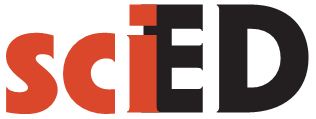Abstract
This article connects an ongoing discussion about the redefinition of basic units in the International System of Units with the teaching of chemistry. The “new” definition of mole is to be based on the precise determining of Avogadro constant. However, problems related to this new definition have roots in the history of the quantity amount of substance itself. One of the main problems is the fact that the amount of substance is the only discontinuous quantity (from among basic quantities) whose unit ‘mole’ was not introduced in the International System of Units on the basis of properties of the nature, but only by human agreement. Thus, the question is whether the mole is correctly placed among basic units of the International System of Units. This is one of the reason why this quantity is also interesting from the didactic point of view. It is discussed in this article.References
Bara´nski, A. (2012). The Atomic Mass Unit, the Avogadro Constant, and the Mole: a Way to Understanding. Journal of Chemical Education, 89(1), 97–102.
BIPM. (2013). Draft 9th Brochure. Dostupné z http://www.bipm.org/utils/common/pdf/si brochure draft ch123
De Bi`evre, P. (2007). Numerosity Versus Mass. Accreditation and Quality Assurance, 12(5), 221–222.
De Bi`evre, P. (2011). Integer numbers and their ratios are key concepts in describing the interactions of atoms and molecules. Accreditation and Quality Assurance, 16(3), 117–120.
Furio, C. (2000). Difficulties in Teaching the Concepts “Amount of Substance” and “Mole”. International Journal of Science Education, 22(12), 1 285–1 303.
Held, Ľ. (1985). Osvojovanie pojmu „látkové množstvo": metodický list. Bratislava: Ústredný ústav pre vzdelávanie učiteľov.
Held, Ľ. (2011). Konfrontácia koncepcií prírodovedného vzdelávania v Európe. Scientia in educatione, 2(1), 69–79.
Hill, T. P. (2011). Criticisms of the proposed “new SI”. Accreditation and Quality Assurance, 16(8), 471–472.
Hill, T. P. & Khruschov, V. V. (2013). Is there an objective need for an urgent redefinition of the kilogram and mole? Measurement Techniques, 56, 747–752.
Johansson, I. (2011). The Mole is Not an Ordinary Measurement Unit. Accreditation and Quality Assurance, 16(8–9), 467–470.
Leonard, B. P. (2011a). The avo (Av), gali (G), entity (ent) and exact dalton. Accreditation and Quality Assurance, 16(3), 173–174.
Leonard, B. P. (2011b). Alternative interpretations of the mole and the ideal gas equation. Accreditation and Quality Assurance, 16, 577–581.
Leonard, B. P. (2011c). Why the invariant atomic-scale unit, entity, is essential for understanding stoichiometry without ‘Avogadro anxiety’. Accreditation and Quality Assurance, 16(3), 133–141.
Meinrath, G. (2011). The mole: definition versus practical use. Accreditation and Quality Assurance, 16(3), 167–170.
Mills, I. M. (1995). Unity as a unit. Metrologia, 31, 537.
Milton, M. J. T. (2011). Reasonable scope for change. Accreditation and Quality Assurance, 16(11), 575–576.
Padilla, K. & Furio Mas, C. (2008). The Importance of History and Philosophy of Science in Correcting Distorted Views of “Amount of Substance” and “Mole” Concepts in Chemistry Teaching. Science and Education, 17(4), 403–424.
Pavese, F. (2011). Some Reflection on the Proposed Redefinition of the Unit for the Amount of Substance and of Other SI Units. Accreditation and Quality Assurance, 16(8–9), 161–165.
Petera, M. (1988). Mnohost a její měrné jednotky. Poznatky teoretické metrologie (teorie měření) využitelné k logickému a srozumitelnému výkladu kvantifikačních pojmů a výpočtů v chemii. Praha.
Price, G. & De Bi`evre, P. (2009). Simple Principles for Metrology in Chemistry: Identifying and Counting. Accreditation and Quality Assurance, 14(6), 295–305.
Price, G. (2010). Failures of Global Measurement System. Part 1: the Case of Chemistry. Accreditation and Quality Assurance, 15(7), 421–427.
Price, G. (2011). A skeptic’s review of the New SI. Accreditation and Quality Assurance, 16(3), 121–132.
Richard, P. & Ullrich, J. (2014). Joint CCM and CCU roadmap towards the redefinition of the SI in 2018. Dostupné z http://www.bipm.org/en/measurement-units/new-si/
Rocha-Filho, R. C. (2011). Reproposition of numerosity as the SI base quantity whose unit is the mole. Accreditation and Quality Assurance, 16(3), 155–159.
Schubertová, R. (2014). Induktívne osvojovanie pojmu látkové množstvo [Dizertačná práca]. Trnava: Trnavská Univerzita.
Slavíček, P. (2012). Avogadrova konstanta: 201 let počítání molekul. Chemické listy, 106, 1 023–1 028.
Šramko, T. et al. (1991). Chémia 8: pre 8. ročník základnej školy. Bratislava: Slovenské Pedagogické Nakladateľstvo.
Tifi, A. (2012). Dismissing the Mole Concept. La Chimica nella Scuola, 34(3), 368–371.
Vicenová, H. & Ganajová, M. (2012). Chémia pre 9. ročník základnej školy a 4. ročník gymnázia s osemročným štúdiom. Bratislava: EXPOL PEDAGOGIKA.
Authors who publish with this journal agree to the following terms:
- Authors retain copyright and grant the journal right of first publication with the work simultaneously licensed under a Creative Commons Attribution License that allows others to share the work with an acknowledgement of the work's authorship and initial publication in this journal.
- Authors are able to enter into separate, additional contractual arrangements for the non-exclusive distribution of the journal's published version of the work (e.g., post it to an institutional repository or publish it in a book), with an acknowledgement of its initial publication in this journal.
- Authors are permitted and encouraged to post their work online (e.g., in institutional repositories or on their website) prior to and during the submission process, as it can lead to productive exchanges, as well as earlier and greater citation of the published work (See The Effect of Open Access).
